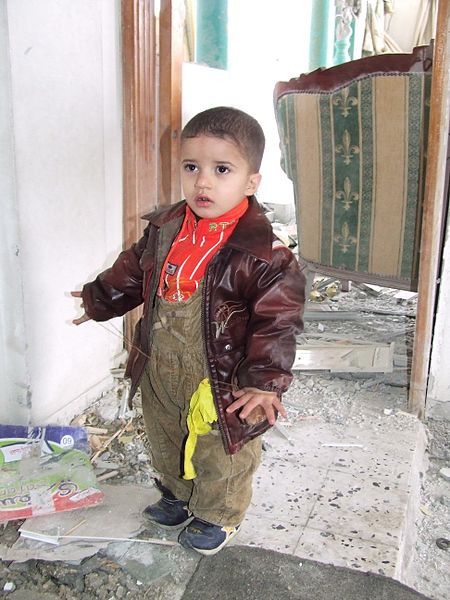Post-War Aid Packages Lack Mental Health Provisions

Because this harm isn’t manifested physically — we cannot see someone with depression in the way we can see someone without a roof over their head—it often goes unaccounted for and unaddressed, even in the most comprehensive of aid packages. Psychological harm, though, which comes in many forms, has been proven to be one of the most significant impacts of war.
READ MORE: President Obama Promises To 'Degrade And Destroy' ISIL
When war zones and residential areas overlap, scenes of violence are inevitable for the innocent inhabitants. Children in war zones grow up in constant fear—that their homes will be destroyed, that their familes will be captured—which can cause aggression, nervousness, restlessness and insomnia, and causes their brains from a young age to develop in an unhealthy way. Then, there is another level of psychological disruption and harm, for those whose worst fears come true. In wars around the world, up to 90 percent of casualties are civilians. Men, women and children alike in war zones witness the destruction of their homes, the capture, torture or murder of their families, and the crumbling of everything they've ever known.
According to the International Medical Core's global mental health advisory, mental health disorders across countries increase 15-20 percent in conflict situations. The World Health Organization estimated in 2006 that 10 percent of people who experience traumatic events will have serious mental health problems and another 10 percent will develop behavior that will hinder their ability to function effectively. Most commonly, citizens of countries devastated by war experience depression, anxiety, PTSD and psychosomatic ailments, such as insomnia and back or stomach aches.
A 2002 national multistage survey of Afghanis aged 15 and older found that 62 percent reported experiencing four or more traumatic events in the last 10 years. Nearly 68 percent of those evaluated had symptoms of depression, over 72 percent had anxiety disorder symptoms and over 42 percent showed signs of PTSD.
According to a 2005 study, less than four percent of Palestinian children ages 10-19 showed no symptoms of PTSD.
Of Syrian citizens in residence since the beginning of conflict there in 2011, 31 percent have been found to have severe emotional disorders—most commonly depression, but also schizophrenia and bipolar disorders. Many of those affected are women, but the majority are children who have seen their homes, families and lives destroyed before their eyes. Two and a half million Syrian children don’t even have access to education, let alone to mental health resources.
READ MORE: South Korea Ferryboat Accident Highlights Global Mental Health Stigma
So what does this mean for the rest of the country? Mental health problems cost even fully developed, peaceful nations an average 3-4 percent of their yearly GDP. In 2006, mental illness costs reached 16 percent of U.S. GDP and are well on their way to 20 percent by 2016. The U.S. alone loses over $100 billion just in productivity every year due to untreated mental illness. Mental health crises like the one in Syria can eventually become unavoidable epidemics for the entire country. Mental disorders lead to morbidity, a huge social and economic toll both for individuals involved and for the entire country, decreased productivity and a much higher poverty rate. All of these can snowball to take the country from a war zone to a country with a mental health crisis to an impoverished nation.
Some countries are finally beginning to catch on to the psychological trend in war zones. UNRWA counselors in Gaza, for example, have began to provide psychological first aid and individual counseling to children and families who have undergone massive psychological distress. These counselors even provide parents with orientation and advice for helping their children recover and stay healthy, and organize recreational activities for families.
For the most part, however, in the few countries that do attempt to provide mental health resources, the care is not particularly beneficial. Care and treatment are provided by primary care doctors and nurses who are not trained in any kind of mental health issues or proper response.
We are lucky enough to reside in a country with enough resources to share. When we inflict or see violence, crises and war in other nations, we are quick to jump in and provide aid to innocent civilians. However, food, water and shelter are not enough. If we want to help countries in the long run of their recovery from trauma, we must also take into account the long-term, specifically psychological, effects they incur. Aid packages could easily be revamped to take these effects into account by sending trained psychologists into the areas in need or even by sending training materials to doctors already in the affected regions.
"The State Of Minds" is a column that runs every other Saturday on Neon Tommy, on mental health issues affecting our nation and world, and the challenges we face in overcoming stigma around mental illness.



